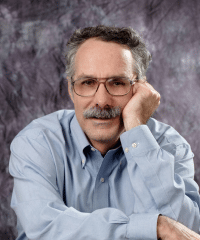The Fed’s jobs machine
August 3, 2019By Robert Samuelson
Federal Reserve Chairman Jerome Powell has not been shy about saying what he’s trying to do: prolong the economy’s expansion so that it creates more jobs for those who, in the past, have often felt left out. The Fed increasingly sees itself as a social agency dedicated to job creation. That — more than the effect on stock prices — is the real story behind the Fed’s decision last week to cut interest rates by a quarter point.
For years, some economists have argued that a “hot” labor market could pay huge social dividends. By “hot,” they meant a situation where the demand for workers equals, or outstrips, the supply. The pressures would push up wages, which, in turn, would cause people not in the labor force (defined as neither having a job nor searching for one) to look for work.
Once employed, these relatively unskilled workers would develop competencies and contacts that would help them get work. Sounds simple. It wasn’t.
There was always an imposing obstacle: inflation. The effort to employ society’s least employable people created a general wage-price spiral that typically forced the Fed to tighten credit, which slowed the economy or led to a recession.
But this time might be different, Powell seems to be betting. For reasons not well understood, inflation has remained low. In the past year, the consumer price index has risen 1.6%. That’s slightly lower than the Fed’s official target of 2% using another, slightly different inflation indicator.
As a result, the Fed may be in a better position now to test the “hot economy” theory than at any time since World War II. Powell is hardly hiding what he and the other members of the Federal Open Market Committee, the Fed’s main decision-making body, are doing. The following excerpt from Powell’s press conference makes this clear.
Q. “Thank you, Mr. Chairman. Scott Horsley for NPR [National Public Radio]. You’ve talked a number of times about the people who feel like they are just recently getting to the punchbowl 10 years into this expansion. Can you elaborate a little bit on how this rate cut is expected to help them?
A. “We are getting lots of feedback from people who work and live in low- and moderate-income communities to the effect that they’re now feeling the recovery, and in fact they haven’t felt a better labor market in anybody’s experience. So this is great to hear. And I guess my view is the best thing we can do for those people is to sustain the expansion, keep it going, and that’s one of the overarching goals of this move [the Fed’s cut in interest rates] and of all our policy moves.”
(Note: The Q&A is edited for space. The “punch bowl” reference is to William McChesney Martin, Fed chairman in the 1950s and 1960s, who said that the Fed’s job is to take away the punch bowl just as the party gets going.)
By law, the Fed is supposed to achieve “maximum” employment and price stability. With tame inflation, the Fed arguably can concentrate on job creation.
The Fed isn’t alone in concluding that low unemployment (3.7%) is attracting new workers. “There’s strong evidence that the tight labor market is drawing people in,” says Josh Bivens of the left-leaning Economic Policy Institute. He cites increases in the labor force participation rate for men and women aged 25 to 54, the prime-age work force.
The participation rate hit a high of 84.6% in early 1999. The Great Recession of 2007-09 then led to an explosion of joblessness. The participation rate slid to 80.8% in mid-2014. Since then, it has recovered to 82%. These changes seem small; they’re not. Each percentage point is worth 1.3 million people. The increase from the low point translates into almost 1.5 million workers.
Labor markets have clearly grown tighter. Since 2009, the number of workers involuntarily in part-time jobs has dropped by about half. And then there’s the broadest unemployment indicator, the U-6 (regular unemployment, involuntary part-time employment, plus those “marginally” attached to the labor market). It’s fallen from about 17% in 2009 to 7%.
Still, it’s too early to say Powell has won his bet. There are cautionary signs. For starters, two members of the FOMC dissented from the rate cut, apparently fearing that too much easy credit risks higher inflation and financial speculation.
History amplifies the warnings. Since World War II, there have been two other long stretches of economic expansion: one in the 1960s, then again in 1990s and early 2000s. Both ended badly: the 1960s economy bred high inflation; the tech boom and housing booms gave way to the Great Recession.
It could be déjà vu all over again.
(c) 2019, The Washington Post Writers Group














